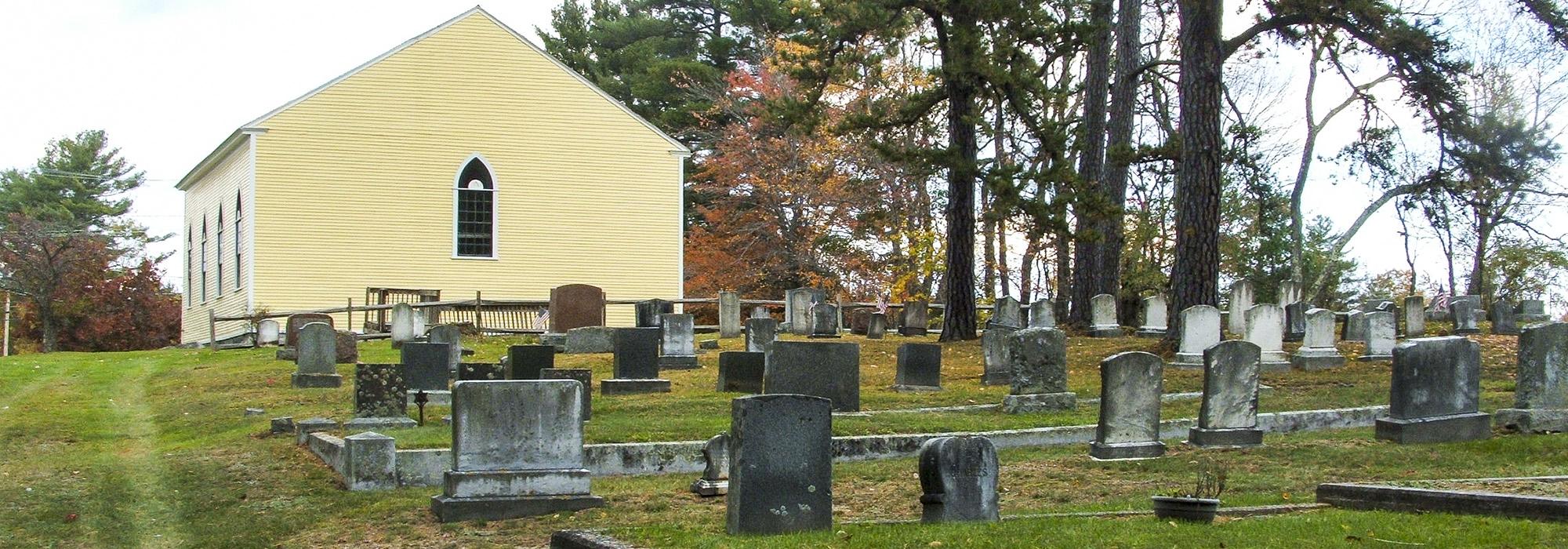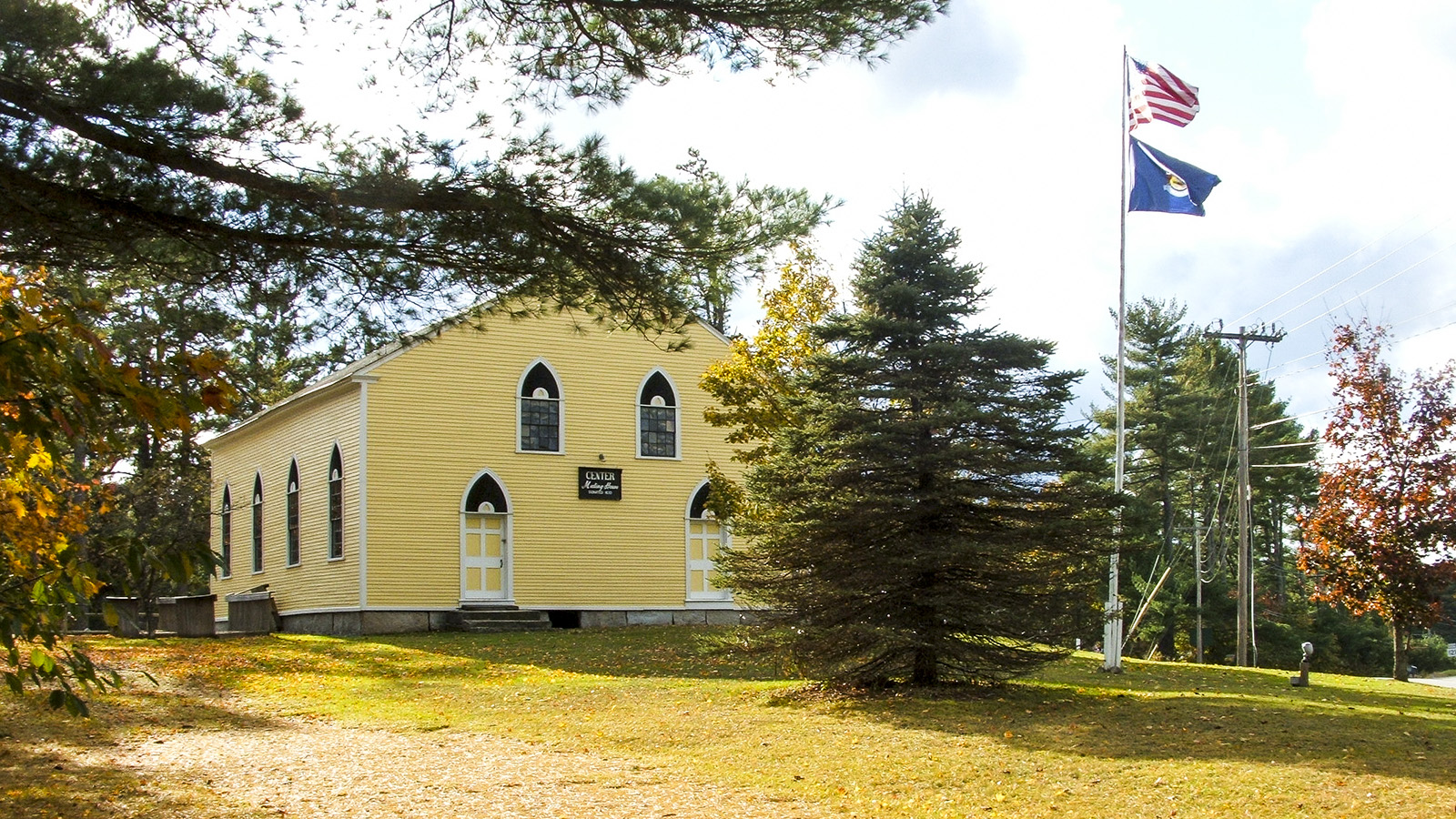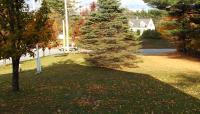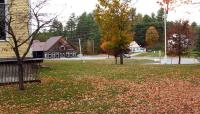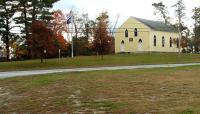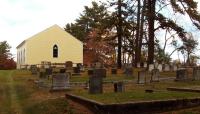Landscape Information
Settled by Massachusetts immigrants near the end of the Revolutionary War, Oxford’s original town land grant was largely purchased by Andrew Craigie, George Washington’s Apothecary General. After Oxford’s incorporation in 1829, Craigie’s heirs offered to build a meeting house, common, and burying ground on a three-acre site selected by the town. Residents voted to clear the common of all existing vegetation, plow, level it, seed with grass, and enclose it with a log fence. Completed in 1830, the meeting house was used by the Congregational, Baptist, Universalist, and Methodist churches and for town meetings. In 1850 the selectmen voted to fence in and prepare land behind the meeting house for a burying ground, which was completed that same year.
The Center Meeting House is unique for its blend of Federal and Gothic Revival architectural features. Today it sits on 1.35 acres of open lawn dotted with evergreen and deciduous trees. Separated by a split rail fence, the cemetery occupies the remaining original three acres. The common is one of the earliest designed landscapes in Maine, with no 19th or 20th-century improvements made to the site. The Center Meeting House & Common district was listed in the National Register of Historic Places in 1997.



